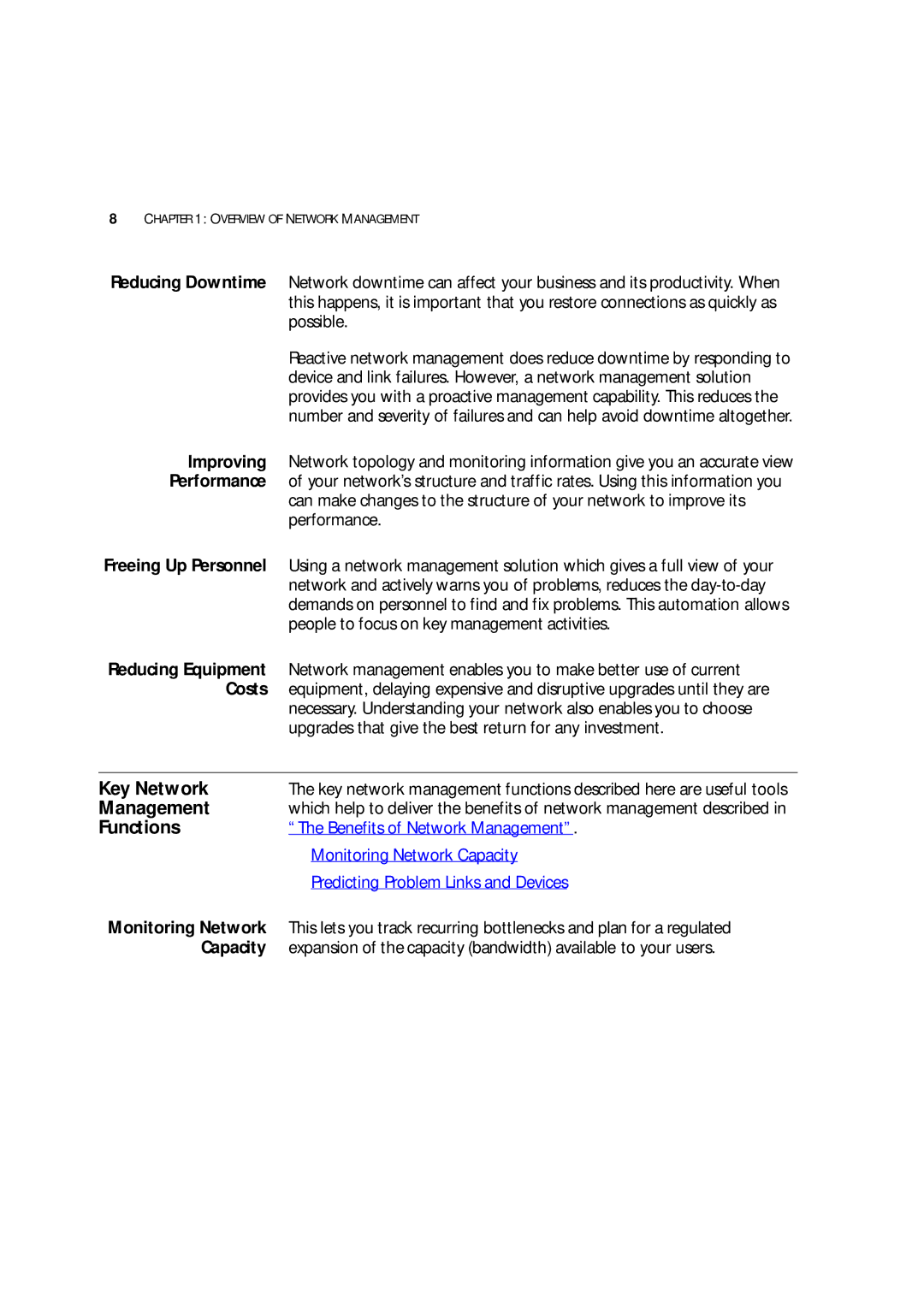8CHAPTER 1: OVERVIEW OF NETWORK MANAGEMENT
Reducing Downtime | Network downtime can affect your business and its productivity. When |
| this happens, it is important that you restore connections as quickly as |
| possible. |
| Reactive network management does reduce downtime by responding to |
| device and link failures. However, a network management solution |
| provides you with a proactive management capability. This reduces the |
| number and severity of failures and can help avoid downtime altogether. |
Improving | Network topology and monitoring information give you an accurate view |
Performance | of your network’s structure and traffic rates. Using this information you |
| can make changes to the structure of your network to improve its |
| performance. |
Freeing Up Personnel | Using a network management solution which gives a full view of your |
| network and actively warns you of problems, reduces the |
| demands on personnel to find and fix problems. This automation allows |
| people to focus on key management activities. |
Reducing Equipment | Network management enables you to make better use of current |
Costs | equipment, delaying expensive and disruptive upgrades until they are |
| necessary. Understanding your network also enables you to choose |
| upgrades that give the best return for any investment. |
|
|
Key Network | The key network management functions described here are useful tools |
Management | which help to deliver the benefits of network management described in |
Functions | “The Benefits of Network Management”. |
| ■ Monitoring Network Capacity |
| ■ Predicting Problem Links and Devices |
Monitoring Network | This lets you track recurring bottlenecks and plan for a regulated |
Capacity | expansion of the capacity (bandwidth) available to your users. |
